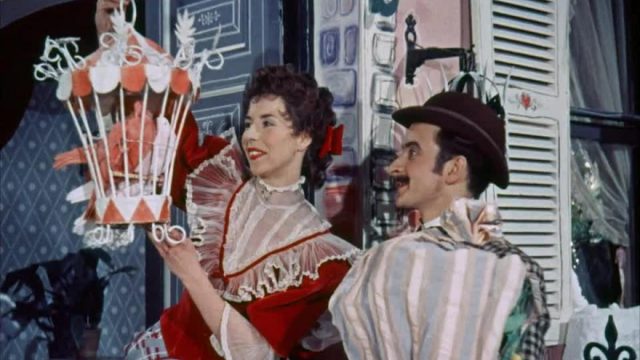It seems the sparse amount of detail about the life of Wendy Toye, CBE, has a lot to do with her own wishes. She refused to write her autobiography; she refused to permit an authorized biography. One assumes that she wanted the privacy. On the other hand, I think possibly that it’s because her work was undervalued during her lifetime and she wasn’t given the kind of opportunities that her talent—and, to be honest, her films’ financial success—probably merited. She was an actress, a choreographer, and a director, and that seems like the sort of person we should be discussing more often. Even if she didn’t make that many movies.
What’s more, little of that work seems to be available streaming. Oh, partially it’s how much of it is theatre. It’s nearly impossible to see theatrical work. Even today. It isn’t filmed, and it isn’t streaming, and there we are. Okay, so it doesn’t matter that we can’t see her first performance—age three, dancing at the Royal Albert Hall. It’s a little sadder to know that we have little record of her choreography, just that of a handful of movies. One of which was the mechanical doll dance in the 1940 Sabu Thief of Baghdad.
I’ve found, on YouTube, a short she directed and acted in where the credits don’t think she’s the most important person. Instead it wants us to know it’s designed by Ronald Searle, who did the set design. I don’t want to denigrate his work; it’s an important job, and he’s done good, if somewhat predictable, work here, but she directed it and stars in it and surely that’s just a touch important as well? It’s a fun story, too, being about a young man who gives her character the Twelve Days of Christmas and how really that’s not something you would want someone to do, as it is indeed cumulative, so she’s ending with twelve pear trees and so forth.
Apparently she had little enthusiasm for her work in Three Cases of Murder, where she directed the segment “In the Picture.” However, she does make it pleasantly eerie, the story of a museum tour guide who is sucked into a painting by one of its denizens. Really, the whole of the movie deserves to be better known; it’s one of those films that’s a collection of short stories strung into a single feature with the help of a narrator. These are often fun—and this one in particular has the most delightfully bonkers segment starring Orson Welles. Featuring multiple dream sequences.
I suppose it’s also possible that the reason she didn’t want to write her autobiography was that she spent a lot of her film career doing projects she didn’t care about and didn’t want to say so. Who knows? It’s worth seeking out what of her work you can find—at least some of it is on YouTube, and Three Cases of Murder is on the Criterion Channel—to encounter a woman whose name you may not be familiar with. And honestly, she may have preferred to be behind the scenes, but that doesn’t mean that the expression on her face when Truelove (David O’Brien) comes around the corner with the drummers drumming isn’t worth it.
Keep me in hard-to-access media by supporting my Patreon or Ko-fi!

